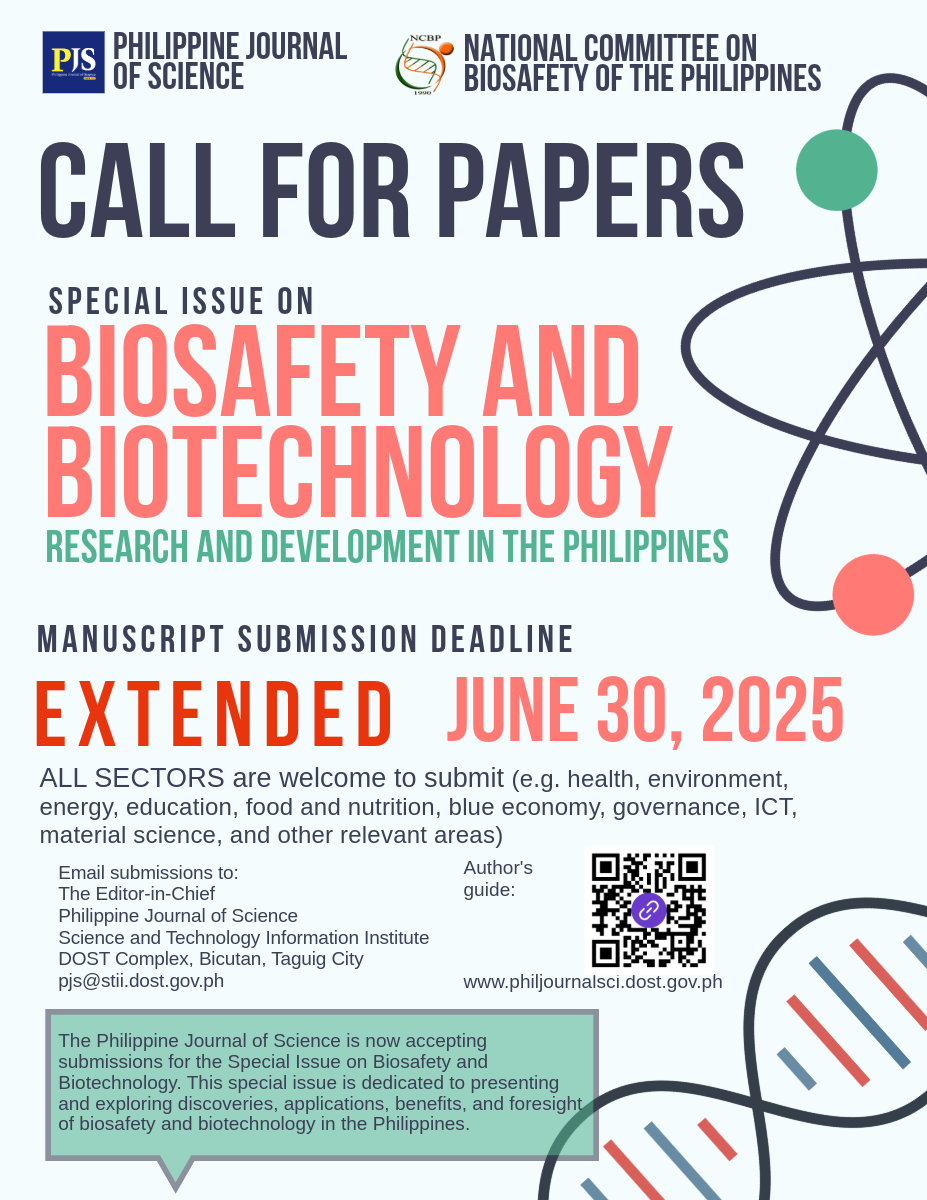Settlement, Growth and Survival of the Donkey’s Ear Abalone Haliotis asinina (Linne) in Response to Diatom Diets and Attachment Substrate
Milagros R. de la Peña1, Joseph I. Bautista2, Shelah Mae Buen-Ursua1,
Nestor Bayona1, and Virgie Sol T. Titular1
1Southeast Asian Fisheries Development Center, Aquaculture Department,
Southeast Asian Fisheries Development Center 5021 Tigbauan, Iloilo
2Tupaz, St., Tigbauan, Iloilo
corresponding author: This email address is being protected from spambots. You need JavaScript enabled to view it.
ABSTRACT
The effect of feeding four diatom diets (Amphora sp., Navicula ramosissima, Amphora sp. + N. ramosissima, and mixed diatoms) and two attachment substrates (PP+CCA: polyvinyl plates with crustose coralline algae; PP-CCA: polyvinyl plates without crustose coralline algae) were determined for seed production of abalone, Haliotis asinina. On day 5, significantly higher number of larvae settled on PP+CCA fed with mixed diatoms followed by Amphora sp., N. ramosissima, Amphora sp. + N. ramosissima, and abalone larvae reared on PP-CCA fed with N. ramosissima only. Fewer larvae settled on PP-CCA fed with Amphora + N. ramosissima, Amphora sp. and mixed diatoms. The size of abalone juveniles from PP-CCA was significantly bigger compared with juveniles measured from PP+CCA. However, the number of juveniles harvested from tanks provided with PP+CCA was higher compared with tanks with PP-CCA. This study has shown that crustose coralline algae favored the settlement of H. asinina larvae and inoculation of diatom slurry is necessary to provide sufficient food for the growing larvae.
INTRODUCTION
Benthic diatom films growing on plastic plates have been used as settlement substrata for postlarval abalone due to their extracellular polymeric substances (Hoagland et al. 1993) which are considered as the principal food for post-larval and early juvenile abalone (Kawamura & Takami 1995; Kawamura 1996). . . .
REFERENCES
BROWN MR, JEFFREY SW. 1995. The amino acid and gross composition of marine diatoms potentially for mariculture. J Appl Phycol 7: 521-527.
CARBAJAL-MIRANDA MJ, SANCHEZ-SAAVEDRA MD, SIMENTAL JA. 2005. Effect of monospecific and mixed benthic diatom on the growth of red abalone postlarvae Haliotis rufescens (Swainson 1822). J Shellfish Res 24: 401-405.
DAUME S, BRAND-GARDNER S, WOELKERLING WJ. 1999. Preferential settlement of abalone larvae: diatom films vs. non-geniculate coralline algae. Aquaculture 174: 243-254.
DAUME S, KRSINICH S, FARRELL S, GERVIS M. 2000. Settlement, early growth and survival of Haliotis rubra in response to different algal species. J Appl Phycol 12: 479-488.
DE LA PEÑA MR. 2007. Cell growth and nutritive value of the tropical benthic diatom Amphora sp., at varying levels of nutrients and light intensity, and different culture locations. J Appl Phycol 19: 647-655.
GALLARDO WG, BUEN SMA. 2003. Evaluation of mucus, Navicula sp. and mixed diatom as larval settlement inducers for the tropical abalone Haliotis asinina. Aquaculture 221: 357-364.
GORDON N, NEORI A, SHPEGEL M, LEE J, HARPAZ S. 2006. Effect of diatom diets on the growth and survival of the abalone Haliotis discus hannai postlarvae. Aquaculture 252: 225-233.
GUILLARD RRL, RYTHER JH. 1962. Studies on the marine planktonic diatoms. I. Cyclotella nana Hustedt, and Detonela confervacea (Cleve) Gran. Can J Microbiol 8: 229-239.
HOAGLAND KD, ROSOWSKI JR, GRETZ MR, ROEMER SC. 1993. Diatom extracellular polymeric substances: function, fine structure, chemistry, and physiology. J Phycol 29: 537-566.
JOUUCHI T, SATUITO CG, KITAMURA H. 2007. Sugar compound products of the periphytic diatom Navicula ramosissima induce larval settlement in the barnacle, Amphibalanus amphitrite. J Mar Biol 152: 1065-76.
KAWAMURA T. 1996. The role of benthic diatoms in the early life stages of the Japanese abalone (Haliotis discus hannai). In: Survival strategies in early life stages of marine resources. Watanabe Y, Yamashita Y, Oozeki Y eds. Brookfield: A. A. Balkema. p. 355-367.
KAWAMURA T, KIKUCHI S. 1992. Effects of benthic diatoms on settlement and metamorphosis of abalone larvae. Suisanzoshoka 40: 403-409.
KAWAMURA T, ROBERTS RD, NICHOLSON CM. 1998. Factors affecting the food value of diatom strains for post-larval abalone Haliotis iris. Aquaculture 160: 81-88.
KAWAMURA T, TAKAMI H. 1995. Analysis of feeding and growth rate of newly metamorphosed abalone Haliotis discus hannai fed on four species of benthic diatom. Fisheries Sci 61: 357-358.
MARTINEZ MR, CHAKROFF RP, PANTASTICO JB. 1975. Direct phytoplankton counting techniques using a haemocytometer. Philipp Agric 59: 43-50.
MORSE ANC, FROYD CA, MORSE DE. 1984. Molecules from cyanobacteria and red algae that induce larval settlement in the mollusk Haliotis rufescens. Mar Biol 81: 293-298.
MORSE ANC, MORSE DE. 1984. Recruitment and metamorphosis of Haliotis larvae induced by molecules uniquely available at the surfaces of crustose coralline red algae. J Exp Mar Biol Ecol 75: 191-215.
NORMAN-BOUDREAU K, BURNS D, COOKE CA. 1986. A simple technique for detection of feeding in newly metamorphosed abalone. Aquaculture 51: 313-317.
RENAUD SM, PARRY DL, LUONG-VAN T, KUO C, PADOVAN A, SAMMY N. 1991. Effect of light intensity in the proximate biochemical and fatty acid composition of Isochrysis sp. and Nannochloropsis oculata for use in tropical aquaculture. J Appl Phycol 3: 43-53.
ROBERTS RD, KAWAMURA TR, NICHOLSON CM. 1999. Growth and survival of postlarval abalone (Haliotis iris) in relation to development and diatom diet. J Shellfish Res 18: 243-250.
SEARCY-BERNAL R, VELEZ-ESPINO LA, ANGUIANO-BELTRAN C. 2001. Effect of biofilm density on grazing and growth rates of Haliotis fulgens postlarvae. J Shellfish Res 20: 587-591.
SIQUEIROS-BELTRONES DA, VOLTOLINA D. 2000. Grazing selectivity of red abalone Haliotis rufescens postlarvae on benthic diatom films under culture conditions. J World Aquacult Soc 31: 239-246.
SUZUKI H, IORIYA T, SEKI T, ARUGA Y, 1987. Changes of algal community on the plastic plates used for rearing the abalone Haliotis discus hannai. Nippon Suisan Gakkaishi 53: 2163-67.









